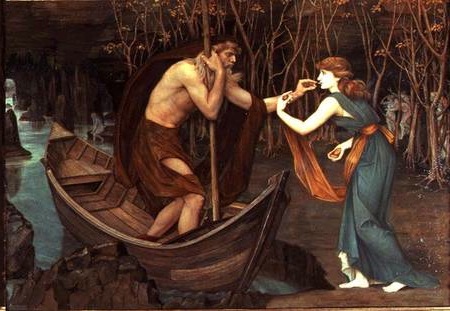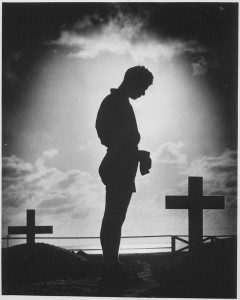Give a coin salute this Memorial Day
Last updated:

Charon and Psyche (1883), a pre-Raphaelite interpretation of the myth by John Roddam Spencer Stanhope
When visiting the cemetery this Memorial Day, you may notice coins placed on graves in addition to the flowers, flags and candles… did you ever wonder why? Traditionally, a penny is the most common coin left at a gravesite. Sometimes it’s left for luck, but if it’s at the gravestone of a soldier, it’s a token of respect and lets the family know you visited.
Coins and cemeteries go back thousands of years. Originally coins were placed in the mouth, the hand, in a pouch or scattered near the deceased. This practice began shortly after the introduction of coinage in ancient Greece. One belief was that bronze and silver coins paid Charon, the ferryman, who shuttled the dead to the afterlife.
Coins thought to have offered protection
![Ancient Roman grave marker [Photo by Ian W. Scott, CC-BY-SA-3.0]](https://blog.littletoncoin.com/wp-content/uploads/Memorial-Philippi_RomanGraveMarker-225x300.jpg)
Ancient Roman grave marker [Photo by Ian W. Scott, CC-BY-SA-3.0]
During the Roman Empire, part of a soldier’s pay went towards his burial fund so his family or a designated person could use it for burial expenses after he retired. If he died while he was still enlisted, his comrades in arms helped out too, especially if he didn’t have a fund. In military campaigns though, common foot soldiers knew that if they died during battle they might be buried in a mass grave. In this scenario, it was only those of higher rank who received individual burials.
Popular folklore says leaving coins on soldier’s tombs began with the Roman army. Nowadays Roman military tombstones still exist, scattered throughout the lands of the former empire. Their inscriptions and carvings shed light on one of the mightiest armies of the ancient world.
Practice of leaving coins on soldiers graves grows during Vietnam era
In America, the practice of leaving coins on a vet’s grave supposedly became widespread during the Vietnam era. At that time in the ’60s and ’70s, pro and anti-war sentiments divided the country, so many chose to leave coins at their buddy’s grave site – representing a “down payment” for a round of drinks or a hand of poker when they were reunited. Now it’s claimed certain denominations signify how personal the relationship to the deceased was. A penny indicates someone visited, a nickel means you were together at boot camp, a dime shows you served together and a quarter signifies you were with them when they died.
Today many cemeteries gather the coins left on soldiers’ graves and use them to pay for burial of veterans in need, or for upkeep of the cemetery. So why not give a coin salute when you visit the cemetery this year? You’ll be paying your respects and letting someone in the family know you visited as well as following a time-honored tradition.




